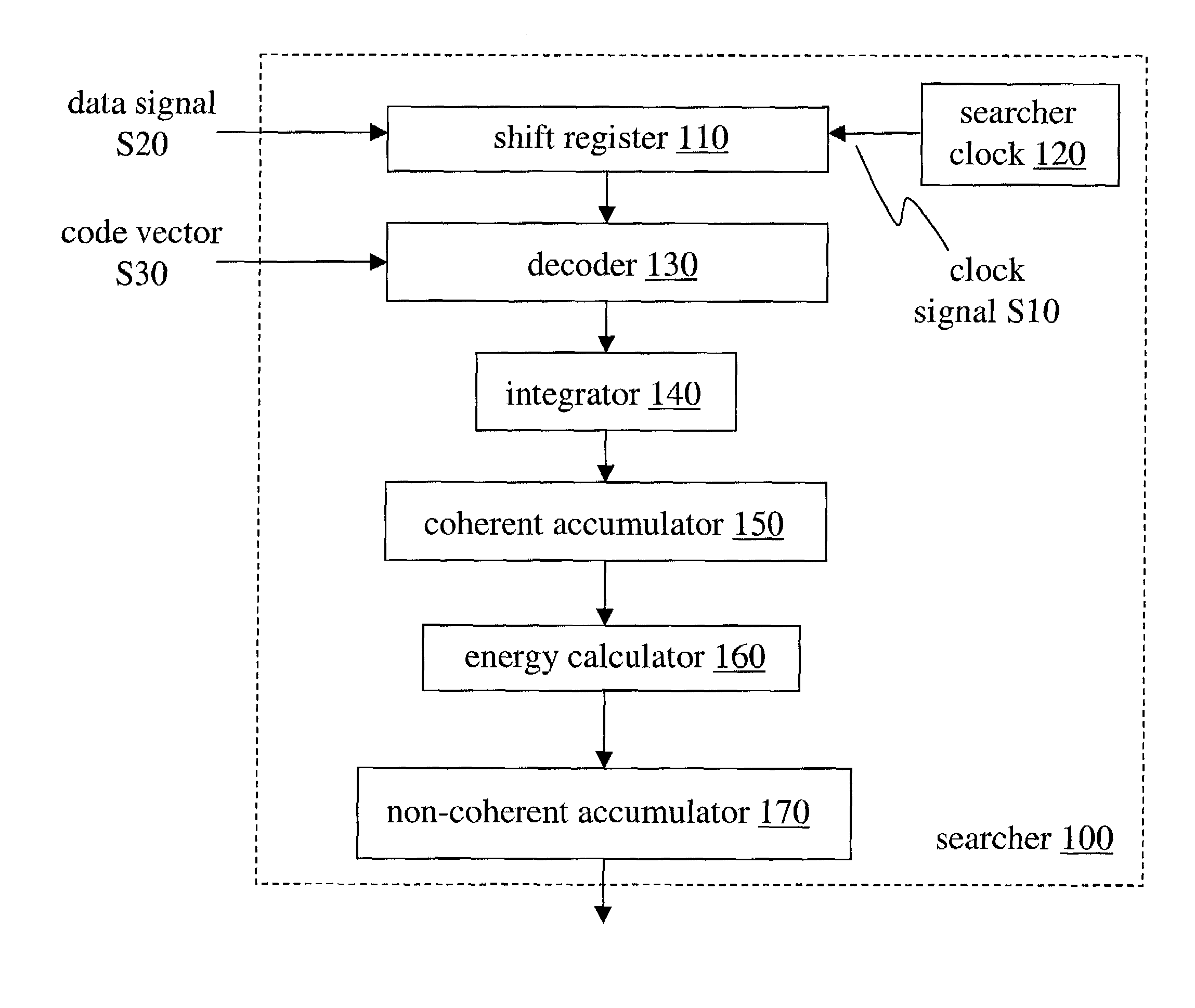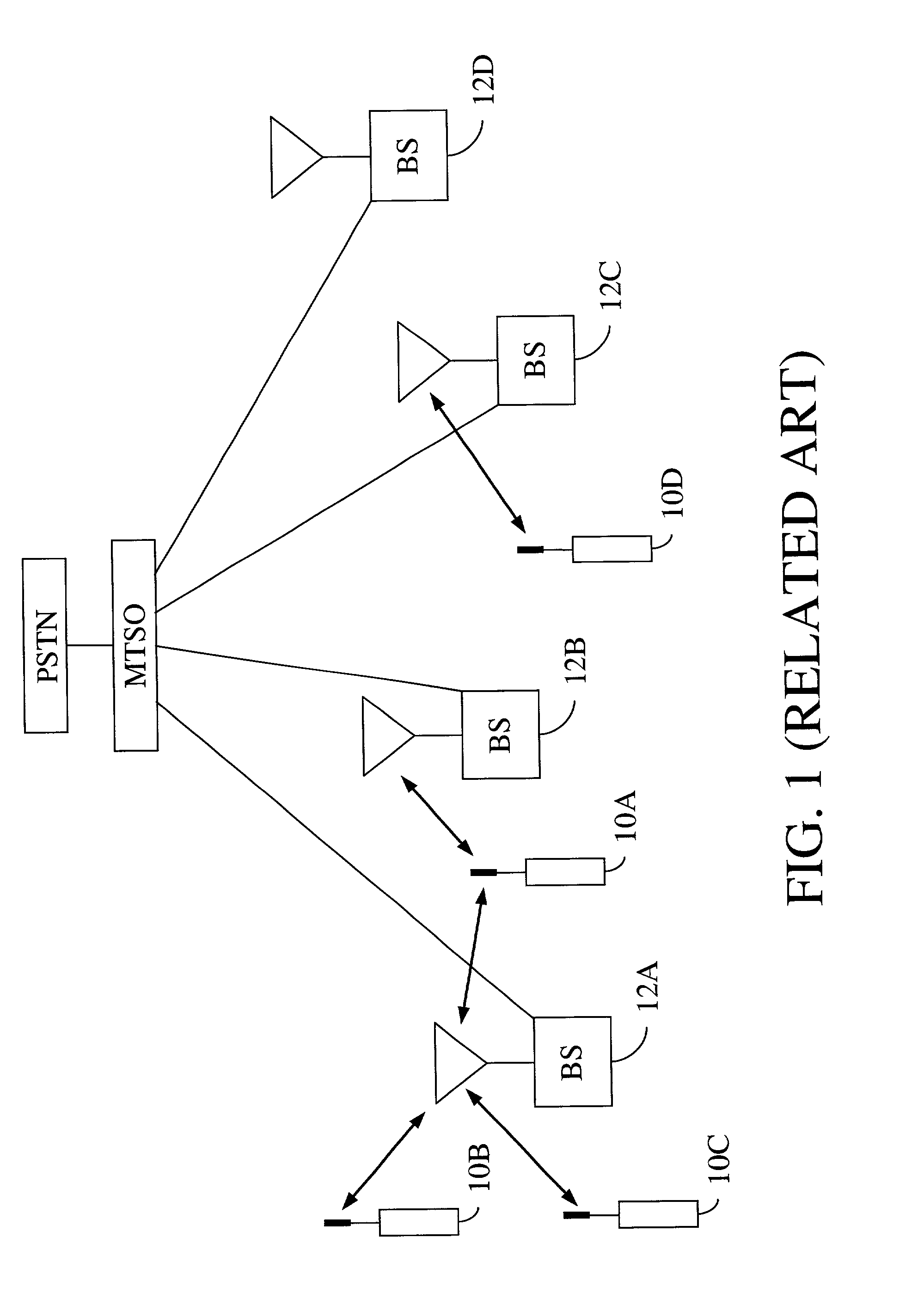Method and apparatus for searching time-division multiplexed synchronization sequences
a time-division multiplex and sequence technology, applied in the field of receiving signals, can solve the problems that existing architectures are not suited to perform such operations on time-division multiplex in an efficient manner, and achieve the effect of unnecessary retrieval operations
- Summary
- Abstract
- Description
- Claims
- Application Information
AI Technical Summary
Benefits of technology
Problems solved by technology
Method used
Image
Examples
Embodiment Construction
[0024]FIG. 4 shows a block diagram of a searcher 100 according to an embodiment of the invention. Samples received over data signal S20 are shifted into an M-element delay chain according to a clock signal S10 from searcher clock 120. In this example, the delay chain is implemented with a shift register 110 which has M complex-valued taps, each component of each tap having 4 bits of resolution, although any other number of taps and resolution may be chosen. The contents of shift register 110 represent the current hypothesis vector, which changes at every transition of clock signal S10 (a transition being designated as, e.g., the rising and / or trailing edge of a pulse on clock signal S10).
[0025]In a real-time searching application, the received samples may be supplied at a constant rate (e.g. by an RF receiving and sampling subsystem). Depending on parameters such as sampling rate and number of antennas, clock signal S10 may transition at the chip rate (i.e. chip×1) or at a higher ra...
PUM
 Login to View More
Login to View More Abstract
Description
Claims
Application Information
 Login to View More
Login to View More - R&D
- Intellectual Property
- Life Sciences
- Materials
- Tech Scout
- Unparalleled Data Quality
- Higher Quality Content
- 60% Fewer Hallucinations
Browse by: Latest US Patents, China's latest patents, Technical Efficacy Thesaurus, Application Domain, Technology Topic, Popular Technical Reports.
© 2025 PatSnap. All rights reserved.Legal|Privacy policy|Modern Slavery Act Transparency Statement|Sitemap|About US| Contact US: help@patsnap.com



